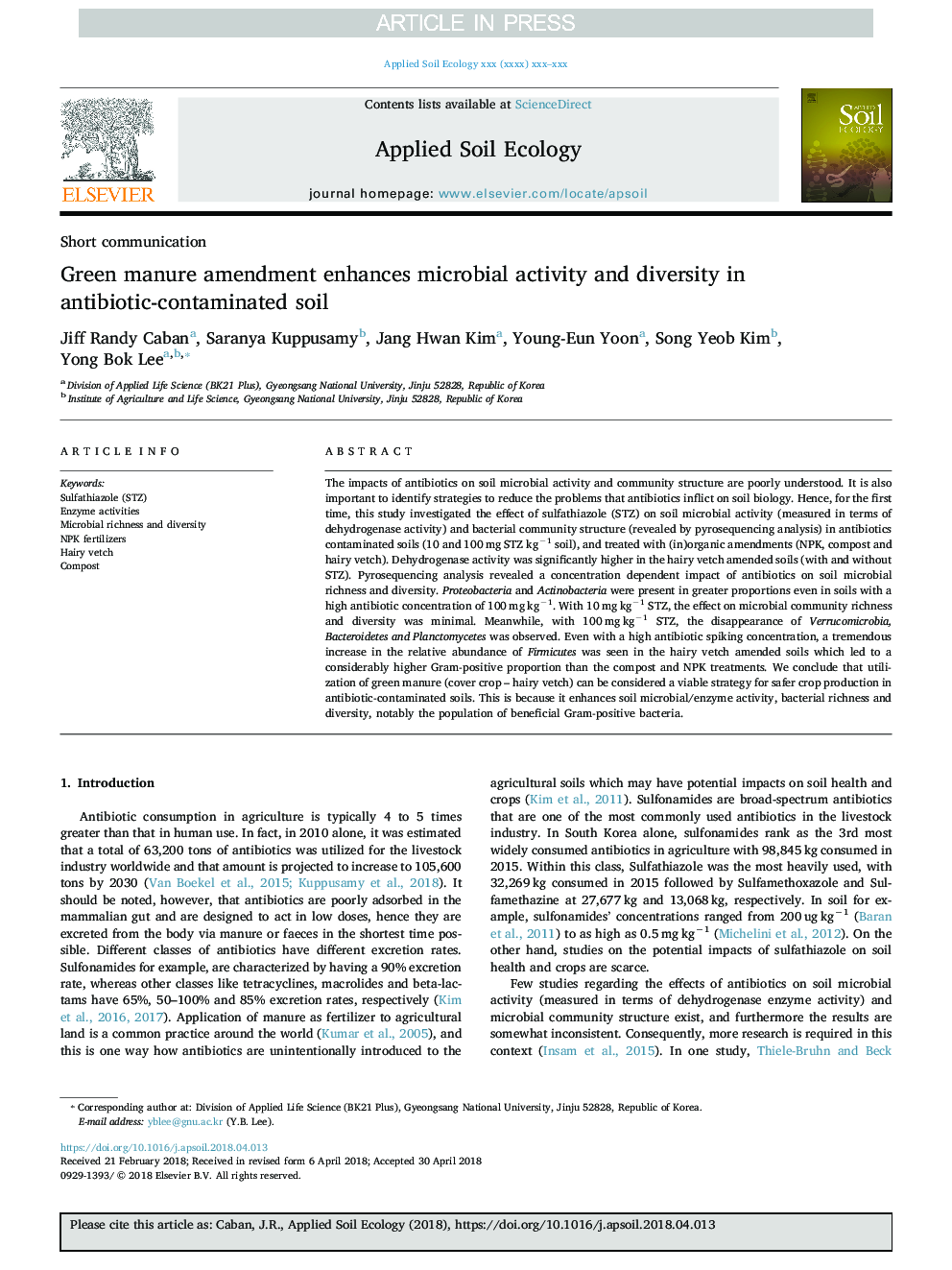| Article ID | Journal | Published Year | Pages | File Type |
|---|---|---|---|---|
| 8846605 | Applied Soil Ecology | 2018 | 5 Pages |
Abstract
The impacts of antibiotics on soil microbial activity and community structure are poorly understood. It is also important to identify strategies to reduce the problems that antibiotics inflict on soil biology. Hence, for the first time, this study investigated the effect of sulfathiazole (STZ) on soil microbial activity (measured in terms of dehydrogenase activity) and bacterial community structure (revealed by pyrosequencing analysis) in antibiotics contaminated soils (10 and 100â¯mg STZ kgâ1 soil), and treated with (in)organic amendments (NPK, compost and hairy vetch). Dehydrogenase activity was significantly higher in the hairy vetch amended soils (with and without STZ). Pyrosequencing analysis revealed a concentration dependent impact of antibiotics on soil microbial richness and diversity. Proteobacteria and Actinobacteria were present in greater proportions even in soils with a high antibiotic concentration of 100â¯mgâ¯kgâ1. With 10â¯mgâ¯kgâ1 STZ, the effect on microbial community richness and diversity was minimal. Meanwhile, with 100â¯mgâ¯kgâ1 STZ, the disappearance of Verrucomicrobia, Bacteroidetes and Planctomycetes was observed. Even with a high antibiotic spiking concentration, a tremendous increase in the relative abundance of Firmicutes was seen in the hairy vetch amended soils which led to a considerably higher Gram-positive proportion than the compost and NPK treatments. We conclude that utilization of green manure (cover crop - hairy vetch) can be considered a viable strategy for safer crop production in antibiotic-contaminated soils. This is because it enhances soil microbial/enzyme activity, bacterial richness and diversity, notably the population of beneficial Gram-positive bacteria.
Related Topics
Life Sciences
Agricultural and Biological Sciences
Ecology, Evolution, Behavior and Systematics
Authors
Jiff Randy Caban, Saranya Kuppusamy, Jang Hwan Kim, Young-Eun Yoon, Song Yeob Kim, Yong Bok Lee,
